 California-based firm HyPoint is developing an innovative cryogenic tank design that could massively boost the range of hydrogen-powered aircraft, a press statement reveals. HyPoint's technology is extremely lightweight compared with traditional fuel cells and it could allow airliners to fly up to four times farther than traditional passenger aircraft. A 50-56 passenger De Havilland Canada Dash-8 Q300, for example, can fly approximately 1,558 km (968 miles) on jet fuel, according to HyPoint. If it were retrofitted with a fuel cell powertrain and a GTL composite tank, it would be able to fly as far as 4,488 km (2,789 miles).
California-based firm HyPoint is developing an innovative cryogenic tank design that could massively boost the range of hydrogen-powered aircraft, a press statement reveals. HyPoint's technology is extremely lightweight compared with traditional fuel cells and it could allow airliners to fly up to four times farther than traditional passenger aircraft. A 50-56 passenger De Havilland Canada Dash-8 Q300, for example, can fly approximately 1,558 km (968 miles) on jet fuel, according to HyPoint. If it were retrofitted with a fuel cell powertrain and a GTL composite tank, it would be able to fly as far as 4,488 km (2,789 miles).
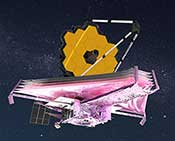 NASA’s James Webb Space Telescope will see the first galaxies to form after the big bang, but to do that its instruments first need to get cold – really cold. On April 7, Webb’s Mid-Infrared Instrument (MIRI) – a joint development by NASA and ESA (European Space Agency) – reached its final operating temperature below 7 kelvins (minus 447 °F, or minus 266 °C).
NASA’s James Webb Space Telescope will see the first galaxies to form after the big bang, but to do that its instruments first need to get cold – really cold. On April 7, Webb’s Mid-Infrared Instrument (MIRI) – a joint development by NASA and ESA (European Space Agency) – reached its final operating temperature below 7 kelvins (minus 447 °F, or minus 266 °C).
Read More
 Researchers in the US report that they have observed the so-called “fourth signature” of superconducting phase transitions in materials known as cuprates. The result, obtained via photoemission spectroscopy of a cuprate called Bi2212, could shed fresh light on how these materials, which conduct electricity without resistance at temperatures of 77 K or higher, transition into the superconducting state.
Researchers in the US report that they have observed the so-called “fourth signature” of superconducting phase transitions in materials known as cuprates. The result, obtained via photoemission spectroscopy of a cuprate called Bi2212, could shed fresh light on how these materials, which conduct electricity without resistance at temperatures of 77 K or higher, transition into the superconducting state.
Read More
Multiphoton Generator on a Chip
 Producing entangled photons whose properties are interdependent is key to several quantum communication technologies. Most techniques for generating these photons make them exclusively in pairs, and those that can produce more than two photons are difficult to implement. But researchers have now made a chip-sized device that can generate bunches of up to six microwave photons at once [1]. The device may be useful for quantum technologies such as extremely secure quantum communication.
Producing entangled photons whose properties are interdependent is key to several quantum communication technologies. Most techniques for generating these photons make them exclusively in pairs, and those that can produce more than two photons are difficult to implement. But researchers have now made a chip-sized device that can generate bunches of up to six microwave photons at once [1]. The device may be useful for quantum technologies such as extremely secure quantum communication.
Read More
AIP Awarded $12.5 Million Grant to Roll Back Underrepresentation of Undergraduate African Americans in Physics, Astronomy
 TEAM-UP Together, a new initiative by the American Institute of Physics (AIP) and key physics and astronomy societies, boldly takes the first steps toward achieving a goal of doubling the number of African Americans graduating from college with undergraduate degrees in physics and astronomy by 2030. The AIP Foundation has secured a $12.5 million, five-year game-changing grant from the Simons Foundation and Simons Foundation International in support of this AIP federation action.
TEAM-UP Together, a new initiative by the American Institute of Physics (AIP) and key physics and astronomy societies, boldly takes the first steps toward achieving a goal of doubling the number of African Americans graduating from college with undergraduate degrees in physics and astronomy by 2030. The AIP Foundation has secured a $12.5 million, five-year game-changing grant from the Simons Foundation and Simons Foundation International in support of this AIP federation action.
Read More
In a Sea of Magic Angles, 'Twistons' Keep Electrons Flowing Through Three Layers of Graphene
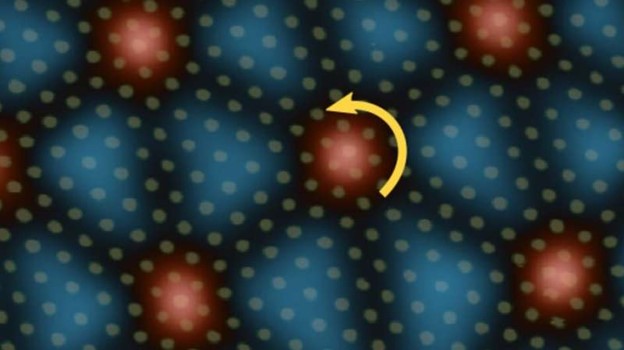 The discovery of superconductivity in two ever-so-slightly twisted layers of graphene made waves a few years ago in the quantum materials community. With just two atom-thin sheets of carbon, researchers had discovered a simple device to study the resistance-free flow of electricity, among other phenomena related to the movement of electrons through a material.
The discovery of superconductivity in two ever-so-slightly twisted layers of graphene made waves a few years ago in the quantum materials community. With just two atom-thin sheets of carbon, researchers had discovered a simple device to study the resistance-free flow of electricity, among other phenomena related to the movement of electrons through a material.
Read More
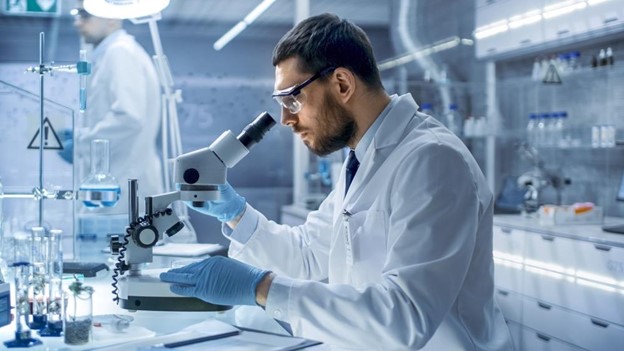 In an article recently published in the Journal of Applied Physics, researchers investigated the influence of strain and pressure on the superconductivity and electron-phonon coupling in magnesium diboride (MgB2). They also discussed the corresponding theoretical approaches and the future of nanostructure design.
In an article recently published in the Journal of Applied Physics, researchers investigated the influence of strain and pressure on the superconductivity and electron-phonon coupling in magnesium diboride (MgB2). They also discussed the corresponding theoretical approaches and the future of nanostructure design.
Read More
 A POSTECH research team led by Professors Gil-Ho Lee and Gil Young Cho (Department of Physics) has developed a platform that can control the properties of solid materials with light and measure them. Recognized for developing a platform to control and measure the properties of materials in various ways with light, the findings from the study were published in the top international academic journal, Nature, on March 16, 2022.
A POSTECH research team led by Professors Gil-Ho Lee and Gil Young Cho (Department of Physics) has developed a platform that can control the properties of solid materials with light and measure them. Recognized for developing a platform to control and measure the properties of materials in various ways with light, the findings from the study were published in the top international academic journal, Nature, on March 16, 2022.
Read More
Insufficient Pressure Conditions in Fuel Tank Led to the Failure of GSLV Mission in 2021: ISRO
 The Indian rocket that carried the country's first Geo Imaging Satellite (GISAT-1) failed in its mission, owing to damage in the soft seal in a critical valve which resulted in lower pressure in the rocket's liquid hydrogen (LH2) tank, the Indian Space Research Organization (ISRO) said on Friday. According to ISRO’s Failure Analysis Committee (FAC), the failure happened when the Geosynchronous Satellite Launch Vehicle (GSLV) rocket's cryogenic engine was to take the rocket forward. (The GSLV-F10 is a three-stage/engine rocket. The core of the first stage is fired with solid fuel and the four strap-on motors by liquid fuel. The second is the liquid fuel and the third is the cryogenic engine.)
The Indian rocket that carried the country's first Geo Imaging Satellite (GISAT-1) failed in its mission, owing to damage in the soft seal in a critical valve which resulted in lower pressure in the rocket's liquid hydrogen (LH2) tank, the Indian Space Research Organization (ISRO) said on Friday. According to ISRO’s Failure Analysis Committee (FAC), the failure happened when the Geosynchronous Satellite Launch Vehicle (GSLV) rocket's cryogenic engine was to take the rocket forward. (The GSLV-F10 is a three-stage/engine rocket. The core of the first stage is fired with solid fuel and the four strap-on motors by liquid fuel. The second is the liquid fuel and the third is the cryogenic engine.)
Read More
Building the Quantum Workforce
 For most of us, quantum computing, next-generation quantum sensing and quantum networking still belong to the future. But many early-career scientists and students are already preparing for that future. Physicist Reina Maruyama, who studies neutrinos and dark matter at Yale University, says she has seen a flood of students and postdocs interested in quantum information science. To Maruyama, this buzz is promising news. “When there is an infusion of new people and new ideas, there's likely to be a big advance in technology,” she says. “I’m excited about that, so then I can combine this new technology with really exciting science.”
For most of us, quantum computing, next-generation quantum sensing and quantum networking still belong to the future. But many early-career scientists and students are already preparing for that future. Physicist Reina Maruyama, who studies neutrinos and dark matter at Yale University, says she has seen a flood of students and postdocs interested in quantum information science. To Maruyama, this buzz is promising news. “When there is an infusion of new people and new ideas, there's likely to be a big advance in technology,” she says. “I’m excited about that, so then I can combine this new technology with really exciting science.”
Read More
 Look at all the surrounding stuff. Unless you’re in the middle of the desert or somewhere else far from civilization, nearly everything you see traveled to you by sea. “Ships bring 80–90% of most everything you want or need, or the raw materials used for making those things,” says Natasha Brown, a senior spokesperson for the London-based International Maritime Organization (IMO), a United Nations agency with 175 member states. The organization oversees shipping safety and security and is responsible for preventing water and air pollution from ships. “Mobile phones, iPads, grains for breakfast cereal, iron ore, crude oil, bananas, and avocados. All of it crosses the oceans by ship.”
Look at all the surrounding stuff. Unless you’re in the middle of the desert or somewhere else far from civilization, nearly everything you see traveled to you by sea. “Ships bring 80–90% of most everything you want or need, or the raw materials used for making those things,” says Natasha Brown, a senior spokesperson for the London-based International Maritime Organization (IMO), a United Nations agency with 175 member states. The organization oversees shipping safety and security and is responsible for preventing water and air pollution from ships. “Mobile phones, iPads, grains for breakfast cereal, iron ore, crude oil, bananas, and avocados. All of it crosses the oceans by ship.”
Read More
 Maybell Quantum unveiled the Icebox, a cryogenic platform to power the next generation of quantum computers. Maybell's condenses a room-sized cryogenic setup into a system slightly larger than a kitchen fridge, cooling quantum devices to just a few thousandths of a degree above absolute zero. Maybell's Icebox solves several pressing challenges for scaling quantum. Quantum computing is a reinvention of computing. It will perform calculations in seconds that would require billions of years for today's most powerful supercomputers, with profound implications for everything from logistics and agriculture to medicine and climate change. But achieving reliable quantum computation requires qubits – quantum computers' fundamental building block – to be in a state where they can be finely manipulated and communicated with through minute signals. Maybell's approach to these challenges has attracted contracts from DARPA, NSIC/DIU and leading research universities, and is now available to the quantum computing industry.
Maybell Quantum unveiled the Icebox, a cryogenic platform to power the next generation of quantum computers. Maybell's condenses a room-sized cryogenic setup into a system slightly larger than a kitchen fridge, cooling quantum devices to just a few thousandths of a degree above absolute zero. Maybell's Icebox solves several pressing challenges for scaling quantum. Quantum computing is a reinvention of computing. It will perform calculations in seconds that would require billions of years for today's most powerful supercomputers, with profound implications for everything from logistics and agriculture to medicine and climate change. But achieving reliable quantum computation requires qubits – quantum computers' fundamental building block – to be in a state where they can be finely manipulated and communicated with through minute signals. Maybell's approach to these challenges has attracted contracts from DARPA, NSIC/DIU and leading research universities, and is now available to the quantum computing industry.
Read More
JILA Atomic Clocks Measure Einstein’s General Relativity at Millimeter Scale
 Physicists from JILA (formerly known as the Joint Institute for Laboratory Astrophysics, a physical science research institute at the University of Colorado Boulder campus and jointly operated by the National Institute of Standards and Technology [NIST] and the University of Colorado Boulder) have measured Albert Einstein’s theory of general relativity (or more specifically, the effect called time dilation) at the smallest scale ever, showing that two tiny atomic clocks separated by just a millimeter, or the width of a sharp pencil tip, tick at different rates.
Physicists from JILA (formerly known as the Joint Institute for Laboratory Astrophysics, a physical science research institute at the University of Colorado Boulder campus and jointly operated by the National Institute of Standards and Technology [NIST] and the University of Colorado Boulder) have measured Albert Einstein’s theory of general relativity (or more specifically, the effect called time dilation) at the smallest scale ever, showing that two tiny atomic clocks separated by just a millimeter, or the width of a sharp pencil tip, tick at different rates.
Read More
Nikkiso Clean Energy & Industrial Gases Group Announces Expansion of Marine Manufacturing in Asia
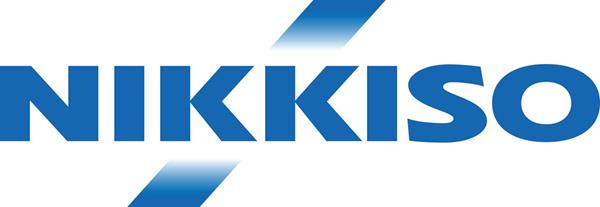 Nikkiso Clean Energy & Industrial Gases Group (Group), a part of the Nikkiso Co., Ltd (Japan) group of companies, is proud to announce yet another expansion of their manufacturing capabilities for the growing marine market. With this expansion, they have become one of the largest manufacturers providing localized assembly in both Busan, Korea and Hangzhou, China. This expansion represents their commitment to and support of the growth of the Asian shipbuilding industry.
Nikkiso Clean Energy & Industrial Gases Group (Group), a part of the Nikkiso Co., Ltd (Japan) group of companies, is proud to announce yet another expansion of their manufacturing capabilities for the growing marine market. With this expansion, they have become one of the largest manufacturers providing localized assembly in both Busan, Korea and Hangzhou, China. This expansion represents their commitment to and support of the growth of the Asian shipbuilding industry.
Read More
Ardent Concepts, Inc. Releases High-Density Ganged Coaxial Attenuators to Support Scale-up of Cryogenic and Quantum Computing Applications
 Amphenol Ardent Concepts, a leading supplier of ganged coaxial connectors for use in cryogenic environments, has released high-density ganged coaxial attenuators for in-line use with the TR Multicoax™ series to support the many unique challenges of scaling up quantum computing applications for practical use. Density, substantial environmental changes, and an increasing need for more high-speed lanes are causing quantum computer designers to rethink traditional routing methods. By utilizing industry-leading materials like oxygen-free high thermal conductivity, copper and NiCr on thermally conductive crystalline quartz dielectric, engineers will be able to drastically decrease real estate required by individual attenuators with minimal change in attenuation to temperature delta down to 3 milliKelvin.
Amphenol Ardent Concepts, a leading supplier of ganged coaxial connectors for use in cryogenic environments, has released high-density ganged coaxial attenuators for in-line use with the TR Multicoax™ series to support the many unique challenges of scaling up quantum computing applications for practical use. Density, substantial environmental changes, and an increasing need for more high-speed lanes are causing quantum computer designers to rethink traditional routing methods. By utilizing industry-leading materials like oxygen-free high thermal conductivity, copper and NiCr on thermally conductive crystalline quartz dielectric, engineers will be able to drastically decrease real estate required by individual attenuators with minimal change in attenuation to temperature delta down to 3 milliKelvin.
Read More
Fluoramics Eliminates Harmful Chemicals from Sealants and Lubricants in Cryogenic Pumps
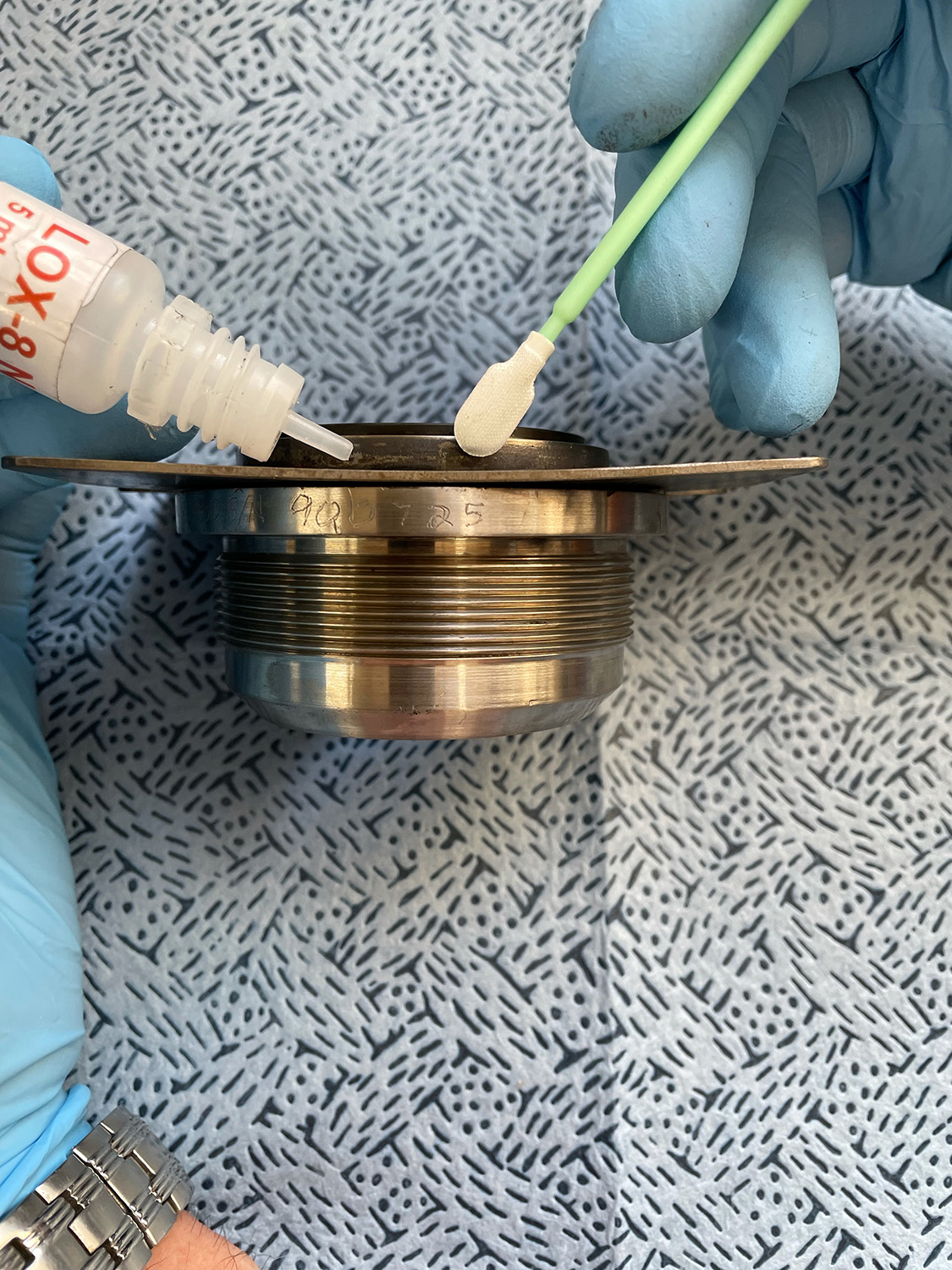 California-based Cryogenic Machinery Corp. (CRYO-MACH) is one of the nation’s leading producers of cryogenic pumps. Founded in 1969, the company manufactures single-stage horizontal centrifugal pumps for many of the world’s largest industrial gas suppliers as well as the leading space exploration companies.
California-based Cryogenic Machinery Corp. (CRYO-MACH) is one of the nation’s leading producers of cryogenic pumps. Founded in 1969, the company manufactures single-stage horizontal centrifugal pumps for many of the world’s largest industrial gas suppliers as well as the leading space exploration companies.
Read More
Young Professionals 2022

The Next Generation in Cryogenics and Superconductivity. This feature introduces outstanding young professionals (under 40 years of age) who are doing interesting things in cryogenics and superconductivity and who show promise of making a difference in their fields. Debuted in the Summer 2006 issue, the feature has presented many young persons whom we are proud to see have indeed lived up to that promise.
Read More
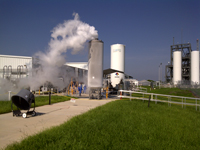 Misconceptions abound in the world, and some are more important to address than others. In the area of cryogenic heat management there are misconceptions that usually have no ill effect but sometimes can become big stumbling blocks. These center around the confusion of temperature and heat (with the word “thermal” thrown in here and there). Temperature is an indicator of what the heat is doing, but it is not heat.
Misconceptions abound in the world, and some are more important to address than others. In the area of cryogenic heat management there are misconceptions that usually have no ill effect but sometimes can become big stumbling blocks. These center around the confusion of temperature and heat (with the word “thermal” thrown in here and there). Temperature is an indicator of what the heat is doing, but it is not heat.
Read More
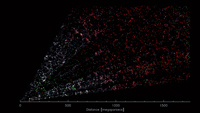 The Dark Energy Spectroscopic Instrument (DESI) has capped off the first seven months of its survey run by smashing through all previous records for three-dimensional galaxy surveys, creating the largest and most detailed map of the universe ever. Yet it’s only about 10% of the way through its five-year mission. Once completed, that phenomenally detailed 3D map will yield a better understanding of dark energy, and thereby give physicists and astronomers a better understanding of the past – and future – of the universe. Meanwhile, the impressive technical performance and literally cosmic achievements of the survey thus far are helping scientists reveal the secrets of the most powerful sources of light in the universe. DESI is an international science collaboration managed by the Department of Energy’s (DOE) Lawrence Berkeley National Laboratory (Berkeley Lab) with primary funding for construction and operations from DOE’s Office of Science.
The Dark Energy Spectroscopic Instrument (DESI) has capped off the first seven months of its survey run by smashing through all previous records for three-dimensional galaxy surveys, creating the largest and most detailed map of the universe ever. Yet it’s only about 10% of the way through its five-year mission. Once completed, that phenomenally detailed 3D map will yield a better understanding of dark energy, and thereby give physicists and astronomers a better understanding of the past – and future – of the universe. Meanwhile, the impressive technical performance and literally cosmic achievements of the survey thus far are helping scientists reveal the secrets of the most powerful sources of light in the universe. DESI is an international science collaboration managed by the Department of Energy’s (DOE) Lawrence Berkeley National Laboratory (Berkeley Lab) with primary funding for construction and operations from DOE’s Office of Science.
Read More
 Cooling things down in space is trickier than it might sound, but that is exactly the process the James Webb telescope is going through right now. Getting down to cryogenic temperature is imperative for its infrared imaging systems to work correctly. While the telescope has already started, it will be another few weeks before the process is complete and it's ready to capture its first groundbreaking infrared images of the universe. That might seem like an exceptionally long time to cool something down; however, it's par for the course in space.
Cooling things down in space is trickier than it might sound, but that is exactly the process the James Webb telescope is going through right now. Getting down to cryogenic temperature is imperative for its infrared imaging systems to work correctly. While the telescope has already started, it will be another few weeks before the process is complete and it's ready to capture its first groundbreaking infrared images of the universe. That might seem like an exceptionally long time to cool something down; however, it's par for the course in space.



